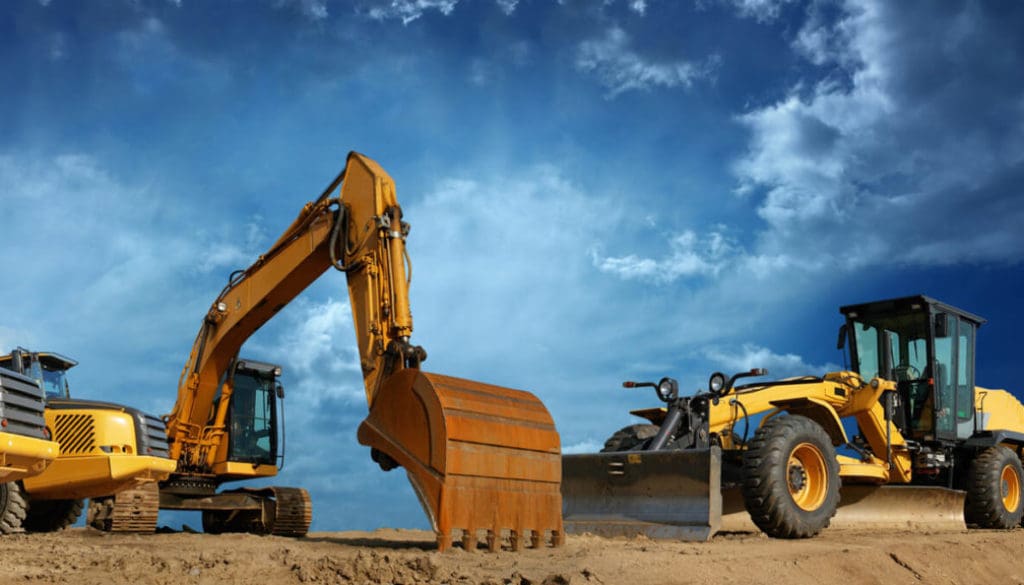Heavy Equipment Rental: High-Quality Machinery for Rent
Heavy Equipment Rental: High-Quality Machinery for Rent
Blog Article
Leasing Vs. Acquiring Construction Equipment: Making the Right Choice for Your Task
When beginning on a building task, one of the essential decisions that predict stakeholders and supervisors face is whether to lease or purchase construction tools. The decision pivots on different aspects such as price factors to consider, project duration, equipment maintenance, scalability, risk, and flexibility management.
Expense Factors To Consider
When assessing the economic aspect of renting versus purchasing construction tools, the long-term costs and in advance costs have to be carefully taken into consideration. Renting out tools typically calls for lower first payments compared to purchasing, making it an eye-catching choice for temporary jobs or service providers with budget restraints. Leasing eliminates the need for huge funding investments and lowers the economic threat related to devices possession, such as maintenance and devaluation costs. Nevertheless, in the future, continuously leasing tools can gather greater expenses than buying, particularly for extended jobs.
On the various other hand, buying building and construction equipment involves higher upfront expenses however can result in long-lasting cost savings, specifically for frequent users or long-lasting projects. Ultimately, the decision between renting and acquiring construction equipment hinges on the job's period, frequency of usage, budget plan considerations, and long-term economic goals.
Project Period

Conversely, for lasting tasks or recurring building and construction job, purchasing equipment might be the more affordable alternative. Investing in equipment can lead to cost financial savings in the long run, especially if the equipment will certainly be frequently used. Moreover, having devices gives a feeling of control over its schedule and permits modification to fit details job requirements.

Equipment Maintenance
Given the vital duty job duration plays in establishing one of the most economical method in between purchasing and leasing building tools, the emphasis now shifts towards taking a look at the vital aspect of equipment upkeep. Appropriate upkeep is vital for ensuring the ideal efficiency and durability of construction equipment. Leasing devices often features the advantage of having actually properly maintained equipment provided by the rental firm. This can alleviate the problem of maintenance tasks from the project owner or contractor, conserving time and initiative. On the other hand, having devices requires a proactive technique to upkeep to stop malfunctions, make sure safety, and expand the tools's life expectancy. Normal examinations, servicing, and timely repair services are essential to keep owned and operated devices in leading functioning problem. Element in maintenance costs when determining between leasing and getting, as disregarding maintenance can cause expensive repairs, downtime, and job delays. Eventually, a well-kept building and construction tools fleet, whether rented out or owned, is vital Click This Link for the effective and effective completion of building and construction tasks.
Flexibility and Scalability
In the world of building equipment administration, the element of adaptability and scalability holds considerable value for job performance and source use. Choosing to lease building and construction equipment offers a high level of versatility as it permits the fast adjustment of equipment kinds and amounts based on the evolving needs of a job. Renting allows service providers to access a wide variety of specialized tools that may be required for details tasks without the long-term dedication of possession. This flexibility is especially useful for tasks with varying needs or unclear durations (heavy equipment rental).
Moreover, scalability, one more critical variable, is naturally linked to versatility. Renting out building and construction equipment uses the benefit of quickly scaling operations up or down as task needs change. Service providers can swiftly include or trade tools to match the task's transforming requirements without the restrictions of owning assets that might end up being underutilized or out-of-date. This capacity to scale resources effectively can cause cost financial savings and improved job timelines, making renting out a positive option for jobs requiring adaptability and receptive source allocation.
Threat Monitoring
Reliable risk monitoring in building devices operations is critical to making sure job success and heavy duty jack rental mitigating possible financial losses. Building and construction jobs inherently include different risks, such as tools malfunctions, crashes, and project hold-ups, which can significantly influence the task timeline and budget plan. By meticulously considering the threats connected with owning or renting building equipment, task managers can make informed choices to minimize these prospective threats.
Renting out building equipment can supply a level of risk reduction by transferring the duty of maintenance and repair work to the rental firm. This can minimize the financial problem on the project proprietor in instance of unforeseen devices failings (dozer rental). Furthermore, leasing provides the flexibility to access specialized tools for specific project phases, decreasing the risk of having underutilized machinery
On the various other hand, having construction tools gives a sense of control over its usage and maintenance. Nonetheless, this also suggests birthing the complete responsibility for repair services, upkeep expenses, and devaluation, enhancing the monetary risks linked with tools possession. Careful risk evaluation and factor to consider construction tractors of aspects such as task duration, equipment utilization, and upkeep demands are vital in figuring out the most appropriate option for reliable risk administration in building projects.
Conclusion
Finally, when determining between renting out and acquiring building devices, it is essential to take into consideration price, task duration, equipment upkeep, scalability, risk, and versatility administration. Each variable plays a critical function in determining one of the most suitable choice for the job handy. By very carefully assessing these facets, task managers can make an educated decision that aligns with their budget plan, timeline, and general job goals.

Report this page